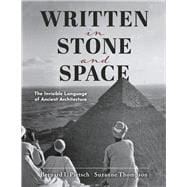Written In Stone and Space takes an in depth look at the role of measure in the art and architecture of the ancient world. The authors propose that ancient builders actualized a high degree of intuition in their work, accompanied by a surprising level of scientific mastery. Evidence of their proficiency survives in the dimensions and geometry of the pyramids, tombs, and burial sites considered in this study. Measure is the key to reading the language of their attainments.
At the heart of archaic art lies a system the authors refer to as the "canon of measure." The canon evolved over eons of observation of the patterns that link all of Nature with the cycles of the heavens and the rhythms of the human body. Documentation of the canon is scant but fragments of its DNA, though dis-integrated over time, have trickled down through history and are still detectable in modern units of measure. This investigation connects the missing links between modern metrology and its ancient canonical roots.
Written in Stone and Space also ponders the enduring qualities of sacred architecture. "Is there some "mystical potency," (as Howard Carter called it) that informs architecture and disposes it to be perennially revered?" Traditional rhetoric, though lofty, says little on the subject.
In addressing this question, the authors draw upon detailed examples from China, the Great Pyramid, the Tomb of Tutankhamun, the Washington Monument and other well-known sites. They distill into ten elements, the features that distinguish iconic architecture from the mundane. The specificity of the data presented may challenge archaeology to reappraise ancient artifacts for their intelligent content. Modern builders may be inspired to restore the power of architectural design to its rightful station—as an instrument of communication and repository of knowledge. Written in Stone and Space commences that restoration.








